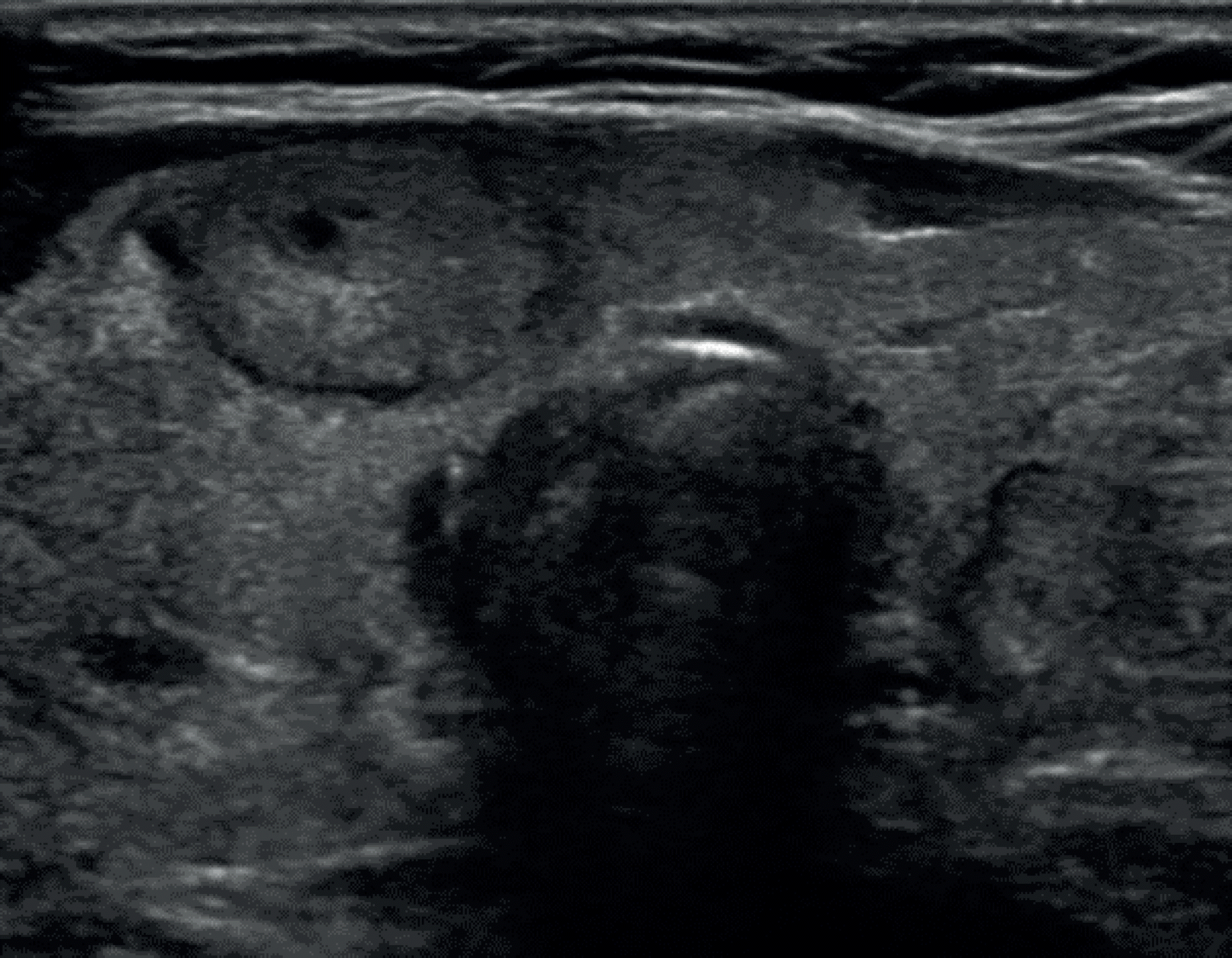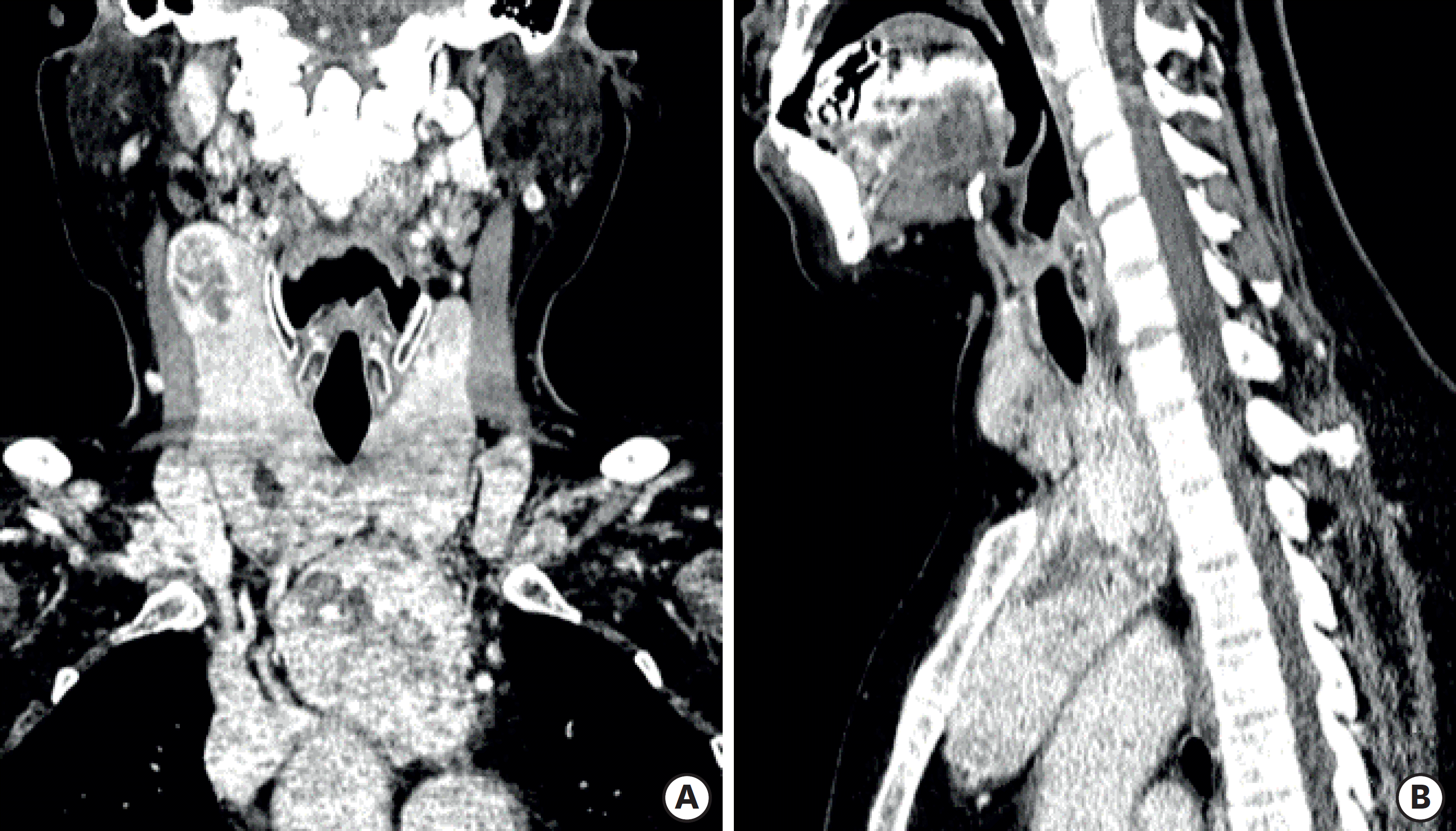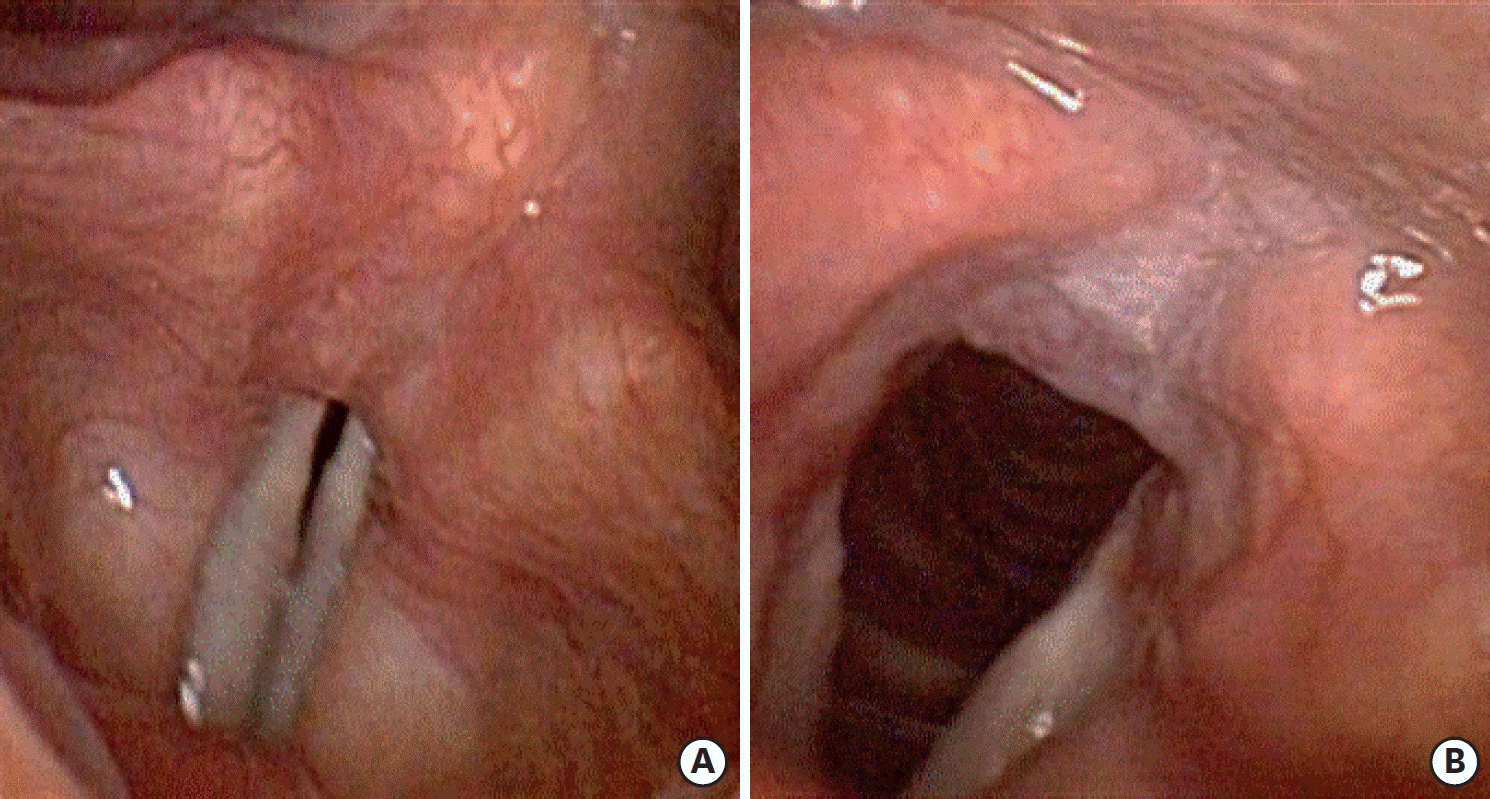초록
The majority of substernal goiters can be retrieved through the neck. However, sternotomy is indicated in roughly 1% to 8% of cases. Herein, we report a case of huge anterior mediastinal goiter removed via median sternotomy. A 62-year-old woman visited our hospital in October 2015, complaining of a large mass in her neck. Her thyroid function test results including antibody levels were within normal limits. Ultrasonography showed multiple nodules that ranged in diameter from 1.0 to 4.7 cm. We were unable to exclude the possibility of papillary thyroid carcinoma following fine-needle aspiration cytology. Furthermore, computed tomography revealed a bulky, 17×8×6 cm thyroid gland that extended to the thoracic cavity. The patient underwent total thyroidectomy via median sternotomy in December 2016; the operation time was 370 minutes. During surgery, 600 mL of red blood cells were transfused, and the patient's estimated blood loss was 1,600 mL. The patient's Simplified Acute Physiology Score III was 35, and she was admitted to the intensive care unit for 2 days immediately post-operation. The recovered patient was discharged 11 days after the operation. The pathologist reported multi-nodular hyperplasia, along with stage I (T1aN0) papillary thyroid microcarcinoma. Sternal split occurs in cases involving difficult retrieval of substernal components or unexpected thoracic hemorrhage. Patients should be well informed of sternotomy and its potential complications.
REFERENCES
1.Halsted WS. Operative story of goiter: the author's operation. Johns Hopkins Hosp Rep. 1920. 19:71–257.

2.Shaha AR., Alfonso AE., Jaffe BM. Operative treatment of substernal goiters. Head Neck. 1989. 11:325–30.

4.Clark OH., Duh QY., Kebebew E., Gosnell JE., Shen WT. Textbook of Endocrine Surgery. 3rd ed.Philadelphia (PA): Jaypee Brothers Medical Publishers;2016.

5.Pemberton J. Surgery of substernal and intrathoracic goiters. Arch Surg. 1921. 2:1–20.
6.Chen AY., Bernet VJ., Carty SE., Davies TF., Ganly I., Inabnet WB, et al. American Thyroid Association statement on optimal surgical management of goiter. Thyroid. 2014. 24:181–9.
7.Randolph GW. Surgery of the Thyroid and Parathyroid Glands. 2nd ed.Philadelphia (PA): Saunders/Elsevier;2013.

8.Lo CY., Kwok KF., Yuen PW. A prospective evaluation of recurrent laryngeal nerve paralysis during thyroidectomy. Arch Surg. 2000. 135:204–7.

9.Thomusch O., Machens A., Sekulla C., Ukkat J., Lippert H., Gastinger I, et al. Multivariate analysis of risk factors for postoperative complications in benign goiter surgery: prospective multicenter study in Germany. World J Surg. 2000. 24:1335–41.

10.Rich JT., Gullane PJ. Current concepts in tracheal reconstruction. Curr Opin Otolaryngol Head Neck Surg. 2012. 20:246–53.

12.Lazar HL., Salm TV., Engelman R., Orgill D., Gordon S. Prevention and management of sternal wound infections. J Thorac Cardiovasc Surg. 2016. 152:962–72.
Fig. 1.
Ultrasonography showed multiple nodules that ranged from 1.0 to 4.7 cm at their longest diameters.

Fig. 2.
CT revealed a bulky, 17×8×6 cm thyroid gland that extended to the thoracic cavity: (A) coronal view, (B) sagittal view. CT = computed tomography.

Fig. 4.
No vocal cord dysfunction was found in the laryngoscopic evaluation after the surgery: (A) phonation, (B) inspiration.

Table 1.
Substernal goiters can be classified as below




 PDF
PDF ePub
ePub Citation
Citation Print
Print




 XML Download
XML Download